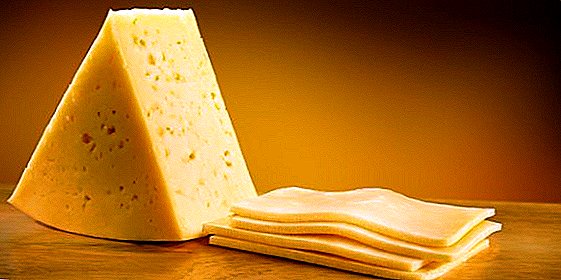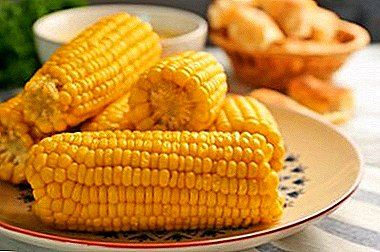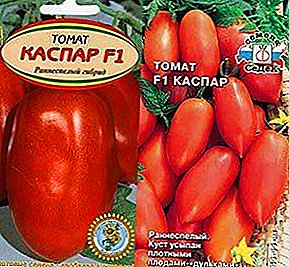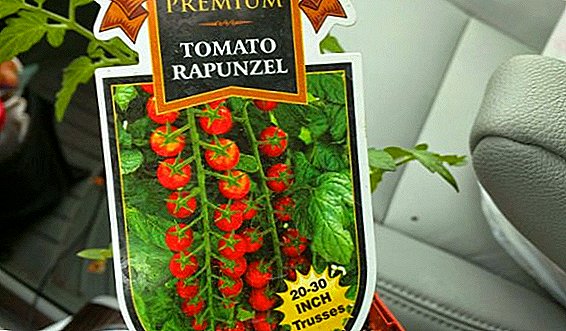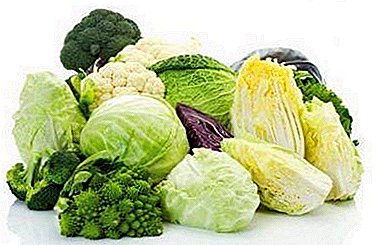 Broilers are popular with both farmers and owners of small farmsteads. The rapid growth and simplicity in content attract many. It will be useful for future owners to find out what diseases can occur in chickens, what are their symptoms and treatment.
Broilers are popular with both farmers and owners of small farmsteads. The rapid growth and simplicity in content attract many. It will be useful for future owners to find out what diseases can occur in chickens, what are their symptoms and treatment.
Broiler resistance to disease
Day-old broilers are very vulnerable and therefore require special attention. The digestive system of such chicks is not yet developed, the process of heat exchange of the body is not established. Therefore, the immunity of chicks (and adults) is directly dependent on human care.
Like any fast-growing bird, it needs oxygenated air. The musty "atmosphere" provokes the appearance of pulmonary edema, water flow in the abdomen (ascites), and accumulation of fluid near the heart (hydropericarditis). Be sure to provide chicks ventilation.  The decisive factor for the health of the bird is its “home”. Litter material must be warm so that the belly is not supercooled. Before "settling" the cell is heated to 24-33 ° С (in small farms a lamp is hung above the box). In the future, it can get rid of the problem than to treat diarrhea in chickens.
The decisive factor for the health of the bird is its “home”. Litter material must be warm so that the belly is not supercooled. Before "settling" the cell is heated to 24-33 ° С (in small farms a lamp is hung above the box). In the future, it can get rid of the problem than to treat diarrhea in chickens.
When it remains several hours before the arrival of the young, warm water (approximately + 25 ° C) is added to the drinkers with the addition of ascorbic acid and glucose at the rate of 2 and 50 g, respectively. This reduces the risk of development of putrefactive processes in the intestine. For the prevention of intestinal infections suitable drugs like "Biomos".
Important! The shelf life of "Biomosa" does not exceed one and a half years. "Factory" is considered to be packed in paper bags of 25 kg.Vitamin and mineral preparations are added to the weak-looking chickens in water. In the first two weeks, food is served in the form of small grains; this food must contain a minimum of complex protein and fats. Such "starts" are sold in large quantities.
Unfortunately, poor-quality feed is found on the market. After they are consumed, diarrhea begins in chickens, and its treatment requires new drugs. These are probiotics and enterosorbents added to feed. Before using them, it is best to consult a veterinarian.
 And, of course, water. Used vacuum drinkers should be cleaned regularly, after which they should be carefully put in place - it is simply dangerous to plant a “swamp” around the watering hole.
And, of course, water. Used vacuum drinkers should be cleaned regularly, after which they should be carefully put in place - it is simply dangerous to plant a “swamp” around the watering hole.
All these measures will secure young growth, but they will not give one hundred percent confidence in health. Therefore, every broiler owner should know at least the main symptoms of their pet's diseases and how to treat them.
Did you know? For breeding on an industrial scale use breeds White Plymouth and Cornish.
Infectious diseases of broilers: description and treatment
An experienced farmer knows that in the process of growth can be distinguished periods when the risk of illness is especially great. Experts confirm this, calling such dangerous intervals: 0-5, 20-25 and 35-40 days. At this time, the bird needs an eye and an eye. Will consider The most common diseases of broilers, their symptoms and proper treatment.
Coccidiosis
The disease is caused by unicellular (Eimeria), affecting the mucous membrane. Because of this inflammation, other infections can occur, so the danger of coccidiosis should not be minimized.
The carrier of the disease may be in the crevices, bedding, drinking bowls and feeders. Any chicken at the age of 10 days can become infected.
Symptoms:
- general weakness;
- reduced appetite;
- small weight gain;
- unsure gait;
- thirst;
- diarrhea with red or orange extracts. Black or dark cherry inclusions with mucus are possible. In some cases, such manifestations may not occur, which only increases the risk of infection.
The particular danger of this ailment is in the survivability of the carrier. It is impossible to completely get rid of coccidia, in small quantities they always reside in the intestines of chickens. Therefore, even the most thorough disinfection will not give the expected result.
Important! Coccidia adapt well to different drugs, producing new strains. Therefore, every one or two years, it is advised to change coccidiostatics.
However, not everything is so gloomy. For prophylaxis along with traditional methods (airing, cleaning) use so-called coccidiostatics. Such drugs are divided into two types. The stores offer lasalocid, salinomycin, naprazin, monensin. These are ionophores designed specifically for the prevention and development of immunity. They are gradually added from the 10-day period. At about the same time before slaughter, they are excluded from the diet.
 Directly for treatment of acute forms Chemistry is used: totazuril, nicarbazine, robenidine, amprolium (both concentrate and 20%) and similar means are added to water. Carefully study the dosage, as it is a potent substance.
Directly for treatment of acute forms Chemistry is used: totazuril, nicarbazine, robenidine, amprolium (both concentrate and 20%) and similar means are added to water. Carefully study the dosage, as it is a potent substance.
The drug is evaporated with water for three to five days (depending on the type of drug and the intensity of the infectious outbreak)
The mentioned disease is one of the main reasons why broilers die at a monthly age. Another "antidote" - ready therapeutic premix. In small packaging, they rarely come across, but the search is worth it.
Did you know? The first incubators appeared in antiquity - they were used by the Egyptians. However, for the industrial divorce of birds such designs began to be used only at the end of the XIX century.
Aspergillosis
The causative agent of the disease is a soil fungus that enters the body from contaminated surfaces, bedding and feed. Especially aspergill is dangerous for day-old chicks.
For sick young animals, an acute course is characteristic, whereas in adult chickens, aspergillosis takes on chronic forms. Symptoms for different ages are also different..
In young:
- slow growth;
- shortness and fast breathing;
- general weakness;
- "gulping" the air, the broiler pulls the neck up.
- a sharp reduction in egg production;
- mucus coming from the eyes and nasal openings;
- total exhaustion;
- embryo death;
- complicated breathing.
If broilers sneeze and wheeze, the question arises, what to do and how to treat? The first step is to clarify the diagnosis.
For an experienced person, this is not difficult - when cutting a sick bird in the lungs there are whole colonies of a contagious fungus (yellowish grains). You can also determine by eggs - these products from sick layers are literally populated with aspergillus. Having broken an egg, it will become visible as a brown-green or black stain.
 If there is no such experience, contact a specialist. True, the tests may be delayed due to the peculiar life cycle of the infection.
If there is no such experience, contact a specialist. True, the tests may be delayed due to the peculiar life cycle of the infection.
For treatment use antifungal antibiotics and iodine-containing agents. But first the rooms are aired - as we know, the disease is transmitted in the air.
Kuram prick nystatin, intraconazole, instatin, mycoplasis and similar antibiotics. Potassium iodide is diluted in water (0.2-0.3 mg per chicken). Copper sulfate is also a solution, it is soldered to five days (in the proportion of 1/2000).
Important! The incubation period of the carrier of aspergillosis reaches two weeks.
Often, vaccination does not work, so it makes sense to switch to the processing of the chicken coop. For this you need the following solutions:
- Iodine solution (1%), take 5 - 10 ml / cu. Exposure - 1.5 hours;
- 2% boric acid solution. The same dosage and exposure;
- Chloride-type composition. 0.2 ml of lime and the same amount of turpentine is taken per cubic meter;
- Monochloride iodine. 0.5 ml / m. Cube for a sealed room. Fill the liquid in galvanized or plastic containers, add aluminum powder in the proportion of 1/20. Exposure - up to 40 minutes with further airing. The normal course of treatment is three in three days.
- Revolin and nystatin are sprayed, 300 cubic meters are needed per cubic meter;
- 1% berenyl: up to 10 ml / m. cc At least half an hour of exposure, 3 - 4 days of processing.
Did you know? In Europe, chicken meat accounts for about 80% of total poultry meat consumption. And broilers confidently hold the lead among the represented breeds.
Marek's disease
Dangerous and common disease, occurring in different forms. Predisposition of broilers to this disease is not a secret for farmers and veterinarians. The risk group is chickens in the first days after hatching, when infection occurs. The cunning of this disease lies in its late manifestation (obvious signs may appear at the age of 2 - 3 months).
Symptoms: 
- Weight loss and general weakness;
- Limping;
- Sick eyes (altered pupil form in layers);
- Constantly rolled to one side of the neck;
- Dehydration (with mass disease).
Re-vaccination is carried out between 10 and 21 days. Vaccines and Nobilis products are used. In this case, it is better to contact the veterinarians.
This disease is difficult to cure due to its unusual timing. A semi-paralyzed bird is difficult to move away. If other symptoms are detected, about 30% of infected chickens die.
Respiratory Mycoplasmosis
The most common disease. Called the bacterium Mycoplasma. Infection occurs through the air, and the chickens pick up the disease is still in the egg. Differs slow (up to 20 days) flow. At about the same age can occur in chickens. The risk zone is age from 20 to 45 days, but adult chickens are also susceptible. The most obvious sign of illness - chickens sneeze and wheeze, and how to treat, we consider in more detail below.
Symptoms:
- wheeze;
- dyspnea;
- slow growth;
- lack of appetite.
- swollen eyelids (rarely, but sometimes).
In adult chickens, the same symptoms are observed, and in addition - a decrease in egg production. All of these symptoms may suggest other diseases (hemophilia, infectious bronchitis, pneumovirus). Mycoplasmosis is easily transmitted to healthy individuals, even a few patients can infect all the livestock. Therefore, we undertake treatment.
Important! Treatment of mycoplasmosis will require some funds - a number of drugs can be called conditionally affordable, and getting them in rural areas is sometimes difficult.
For a small herd use injections. Intramuscular agents are administered to chickens such as:
- Tialong (0.1 g / 1 kg body weight);
- “Tylanic” (both 5% and 20%);
- Farmazin (50,200);
- Tilocolin AF (0.5 g / 1 kg);
- Tilobel (50,200).
A separate question is the treatment of unclear signs.  Here in favor are complex preparations: Biofarm, Gidrotrim, Eriprim, Tilokol, Macrodox 2000, Denagard. Most of them are mixed in the drink, but a considerable part is designed for food. Accordingly, the dosage is also different. In order not to get confused when choosing - consult with the seller or veterinarian.
Here in favor are complex preparations: Biofarm, Gidrotrim, Eriprim, Tilokol, Macrodox 2000, Denagard. Most of them are mixed in the drink, but a considerable part is designed for food. Accordingly, the dosage is also different. In order not to get confused when choosing - consult with the seller or veterinarian.
Did you know? The maximum of nutrients contains of course fresh broiler meat. Up to five days - the most chic for a gourmet.Having dealt with the problem of wheezing in broilers and finding out how to treat, let's stop at disinfection. The choice of means for spraying is small:
- "Monklavit" (3 ml / m 3 cube);
- 30% lactic acid (10 ml);
- "Ecocide" (0.15 ml);
- Yodotriethylene glycol (0.7 ml).
Newcastle disease
Another name is pseudo-wit. It is dangerous for birds of all ages, and both animals and people can act as carriers. The infection is very tenacious - can disperse within a radius of 10 km.
Symptoms:
- severe exhaustion;
- convulsions;
- head twitching;
- diarrhea;
- mucus from the mouth and nasal openings;
- cough;
- pupil clouding;
- wheezing.
Unfortunately, the treatment of such a disease is impractical - healthy chickens are endangered by this. Disinfection, diet, cleaning and distance from a sick stock. On vaccines, too, do not forget. Industrial livestock vaccinated on a mandatory basis, but also this measure will be useful for poultry.
Factory broilers already have immunity, and vaccination in the compound is done at the age of 20-25 days (for home broilers, this period will not be more than 15 days, they drop into the nose or eyes). Adult chickens are treated with inactivates. If the herd is large, they do without "personal processing", giving the so-called live vaccine, diluted in water. She is quite aggressive, but acts a short time.
Carefully study the data on the composition and dosages of the funds - some of them have serious contraindications.
Important! Large grain as food is contraindicated in small chickens.
Pullorosis
In another way, this disease is called white typhoid. The causative agent is Salmonella bacterium. The most dangerous for chickens from 5 to 20 days. It is characteristic that in adult broilers it can proceed without pronounced symptoms:
- diarrhea with light green mucus;
- thirst;
- drowsiness of young;
- dyspnea;
- pale comb (in adults).
In acute form, the sick chicken can die within a week. If the infection occurred on the second or third week, then the disease will have a chronic form. You can determine it: the bird is inactive, often there are problems with the intestines.
Did you know? Broilers are hybrids from crossing different lines of domestic chickens. Such works began to be actively carried out in the middle of the last century and have now reached their peak.
Such diarrhea in broiler chickens and further treatment interests not only the owners, but also veterinarians. The fact is that there are no clear recipes in the case of pullorosis. In addition, even strong antibiotics do not eliminate the infection completely. Therefore, the treatment takes preventive forms.
Fixed assets - furazolidone and biomitsin. They are added to feed:
- Furazolidone: 2 g / 1000 heads (1 - 5 day), 3 g (from 5 to 15), daily.
- Biomitsin: 1 g / 1000 heads from 1 to 10 days, 1.2 g - from 11 months.
Do not forget also about the treatment of the room, disinfection will not be superfluous.
Broiler disease prevention
Diseases of birds require specific measures of treatment, but prevention is common and mandatory for all measures. There are not so many of them, but their importance is obvious.
 First point - room and its preparation. We already mentioned it at the beginning of the article. We add only that disinfection should be carried out with the same frequency, even in a rural yard. One should not forget about the fight against various pests and insects - they are the carriers of the most dangerous diseases. If possible, avoid contact with other birds or animals. It is unnecessary to remind of cleanliness - replacing the litter with fresh material reduces the risk of infection.
First point - room and its preparation. We already mentioned it at the beginning of the article. We add only that disinfection should be carried out with the same frequency, even in a rural yard. One should not forget about the fight against various pests and insects - they are the carriers of the most dangerous diseases. If possible, avoid contact with other birds or animals. It is unnecessary to remind of cleanliness - replacing the litter with fresh material reduces the risk of infection.
Important! Straw mats have less moisture, while straw is not so loose and the reproduction of harmful fungi in it is not as active.
Vaccination depends on the age and place of purchase of the bird. Usually take daily chickens. If you buy at a poultry farm, they are often vaccinated. Although an additional vaccine will be useful.
Compliance with the diet excludes many diseases. High-quality feed, premixes and vitamins, with proper dose calculation, ensure stable growth. It is proposed a lot of such tools, but you can navigate by reading the accompanying information or asking the seller.
The real owner will always see the first signs of the disease. Therefore, do not be lazy to inspect the animals. If several dozen chickens were taken, this simplifies the task. It is desirable to isolate patients and look at their condition.
We reviewed the most common diseases of broilers, their symptoms and treatment. We hope our advice will help to avoid trouble, and housekeeping will be a joy.


